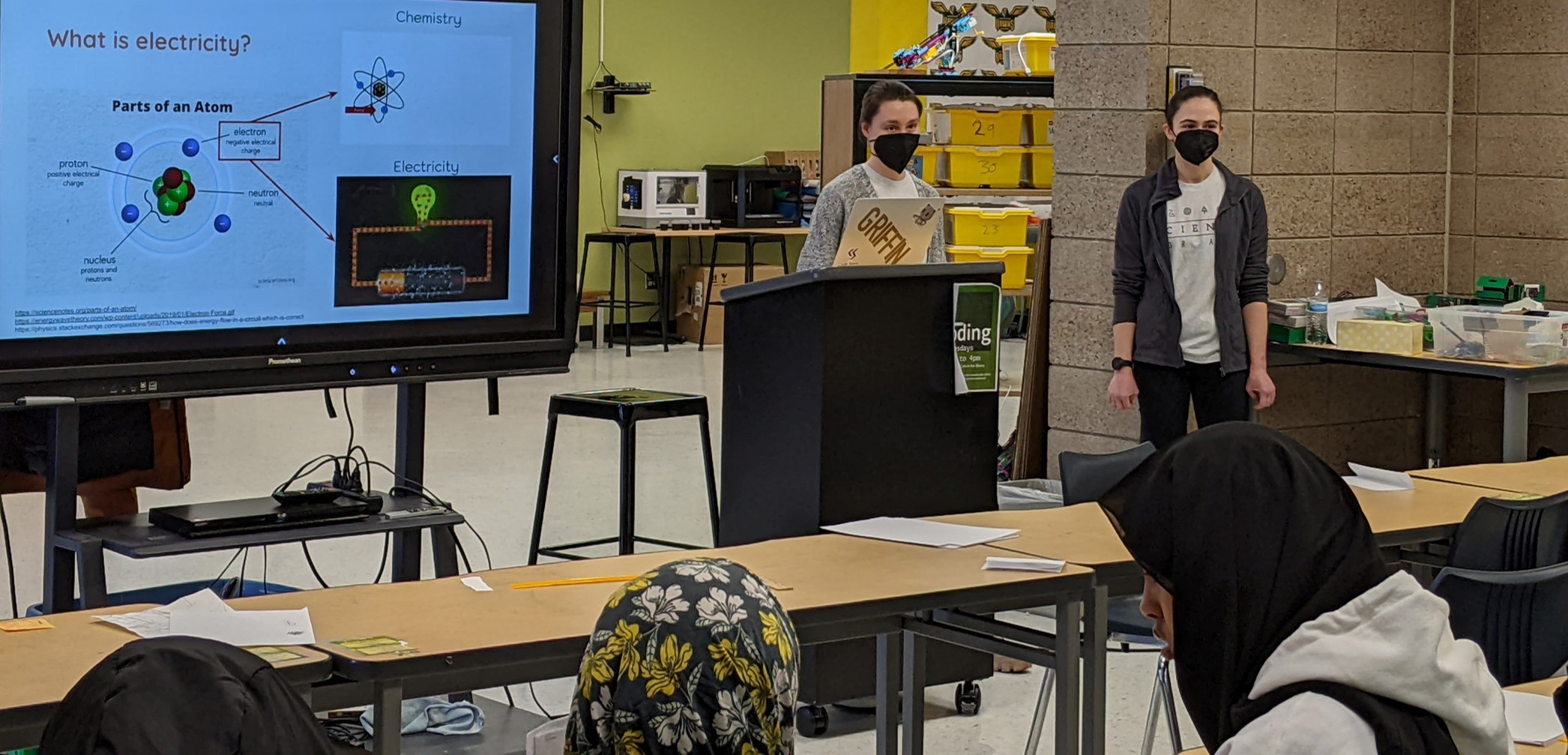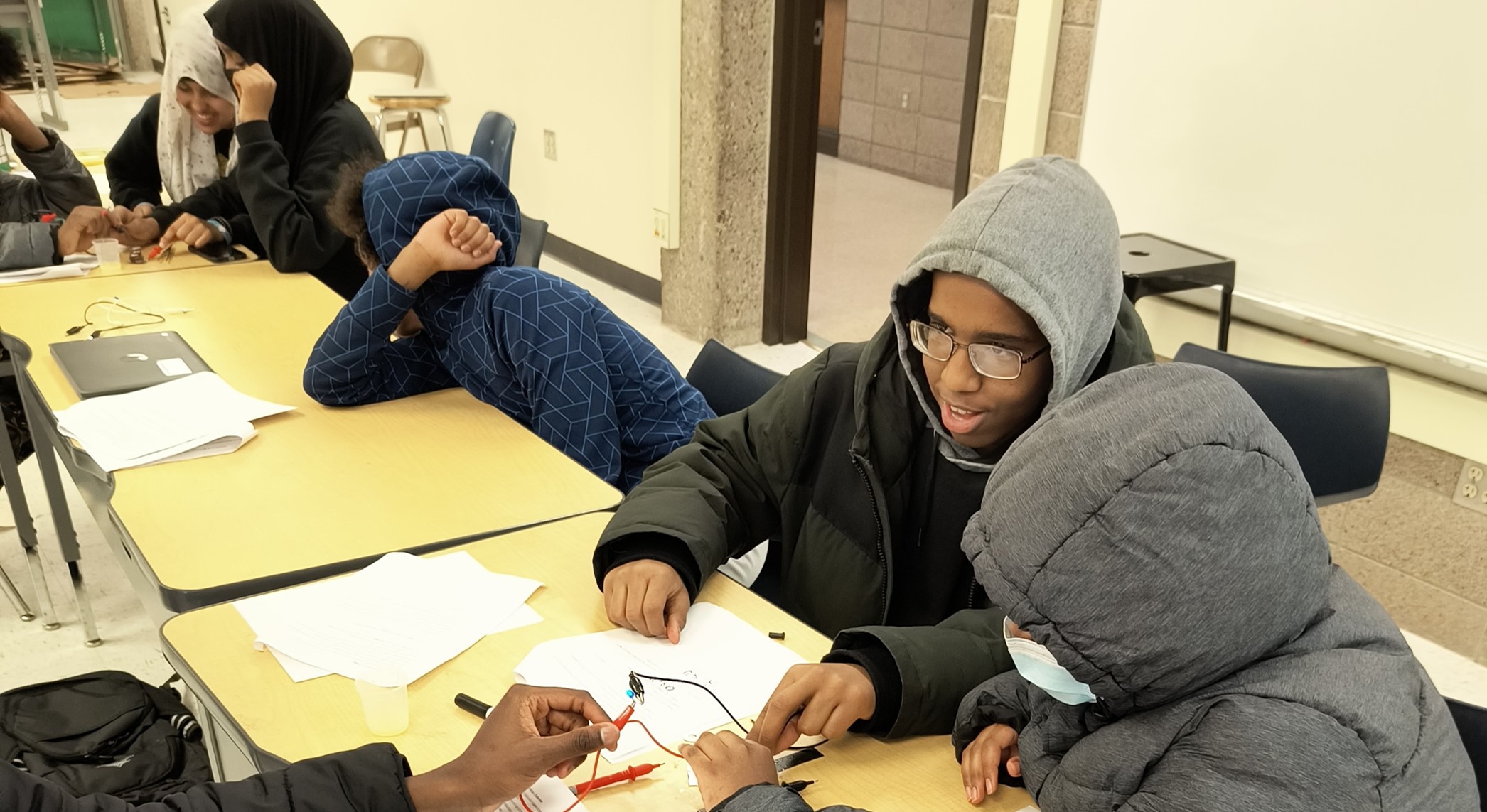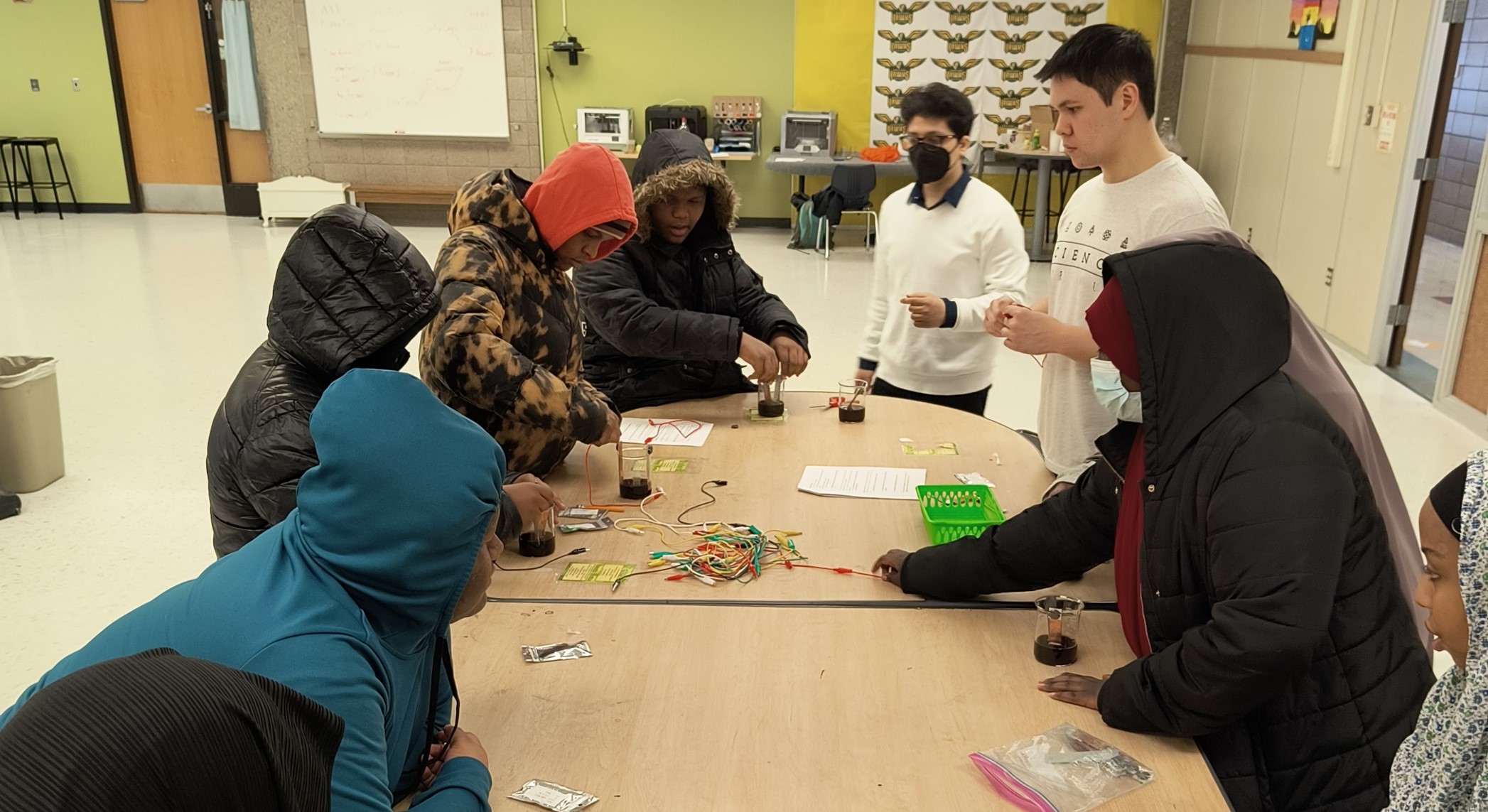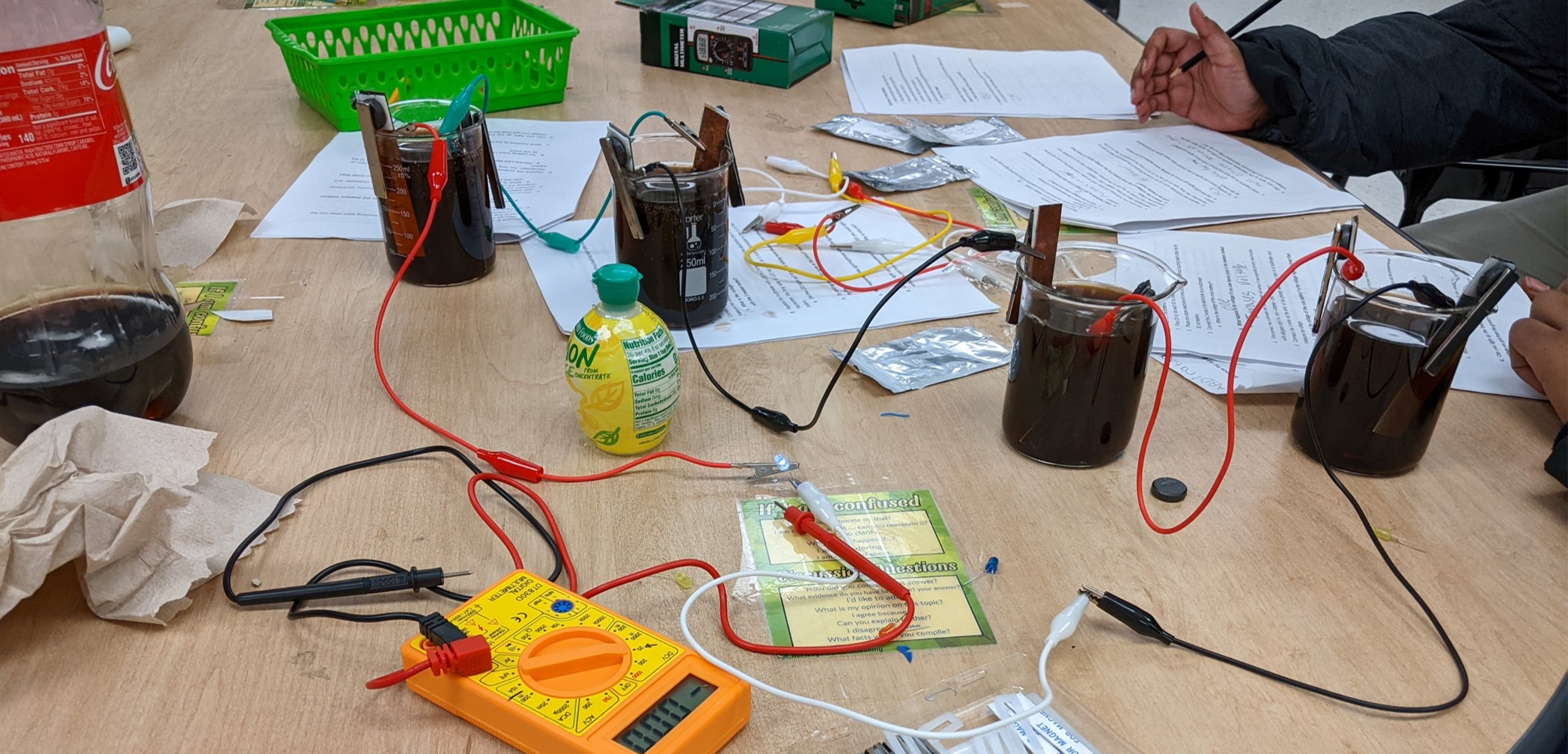March Visit on March 10, 2023
Experiment Leads: Ally Jacoby & Kaylie Richard

In the March visit to Heritage Academy, the Science for All team prepared three experiments on the interconnected relationships between chemistry and electricity. The visit began with a discussion of how electricity could drive chemical reactions. Students broke into small groups to demonstrate the concept and performed a water electrolysis experiment. They observed how placing pencil “probes” connected to a battery into cabbage juice produced bubbles and color changes. The cabbage juice’s color change indicated a changing pH, tying back nicely to previous experiments on acid and bases.


In the second half of the visit, we introduced the idea of galvanic cells, which use chemical reactions to generate electricity. Students were able to test how everyday household items like coco-cola or lemon juice could be combined with zinc and copper plates to power small LED light bulbs. Specifically, they worked on two different setups. In the first, zinc and copper plates were dipped into coco-cola to create “cola batteries.” In the second, students made “voltaic piles,” where zinc washers, lemon-soaked cardboard, and copper pennies were stacked. In both setups, the students measured the electrical current generated using voltmeters. They saw the limitations of these reactions by adding multiple “cola batteries” or piles together in series before the LED batteries could turn on. This discussion paired well with the class’s recent course on dynamo generators since the students could see an alternative way to generate electricity, along with its limitations.
